
Kliodinamika istražuje povijest matematičkim modelima, otkrivajući obrasce koji objašnjavaju zašto se nešto dogodilo ili će se dogoditi u budućnosti. Dva primjera: nastanak velikih zajednica, gradova, država i carstava nije potaknuo razvoj zemljoradnje, kako se dosad mislilo, nego su glavni čimbenik bili ratovi. A što se tiče budućnosti, nestašica hrane uzrkovat će oko 2020. erupciju nemira, sukoba i klanja.
socialevolutionforum.com/
I’d actually recommend reading journal articles I cite before reading my article:
Dynamics of political instability in the United States, 1780–2010 by Peter Turchin
The Food Crises and Political Instability in North Africa and the Middle East by Marco Lagi, Karla Z. Bertrand and Yaneer Bar-Yam.
Data Geeks Say War, Not Agriculture, Spawned Complex Societies

Peter Turchin Photo: Peter Turchin
It seems like data is changing everything we do.
Data analysis has transformed biological research over the past
decade. It has reinvented the business world by way of “big data”
software platforms along the lines of Hadoop, an open source tool
originally built by Yahoo and Facebook. It’s even changing historical
studies, thanks to a movement called Cliodynamics.
Cliodynamics is a field of study created by Peter Turchin in the early 2000s. The idea is to use data as a means of
predicting the future,
but also as a way of testing theories about what happened in the past.
You build a model that seeks to explain history, and then you test this
model using real historical data.
The movement’s latest aim is to analyze the origins of complex societies. In a
paper published today in
Proceedings of the National Academy of Sciences,
Turchin and a trans-disciplinary team from the University of
Connecticut, University of Exeter, and the National Institute for
Mathematical and Biological Synthesis attempt to overturn the long
standing belief that large-scale states are the product of agriculture.
Early humans were hunter-gatherers. They had relatively simple social
structures, which consisted of perhaps a few dozen people, all of whom
knew each other, and they didn’t engage in complex cooperative tasks.
But eventually, complex societies evolved — complete with governments,
armies, agriculture, education, and other large scale, cooperative
projects. With their paper, Turchin and his collaborators analyzed the
spread of the social norms that allowed societies to expand across
millions of people.
“You cannot have a large state without bureaucrats, but bureaucrats
are expensive. You have to pay them,” he says. “So the big question is
how do complex societies evolve when they are so expensive?”
The standard theory, which Turchin calls the “bottom up” theory, is
that humans invented agriculture around 10,000 years ago, providing
resource surpluses that freed people up for other ventures. But what
Turchin and his team have found is that the bottom-up theory is wrong,
or at least incomplete. “Competitions between societies, which
historically took the form of warfare, drive the evolution of complex
societies,” he says.
To test the two competing theories, Turchin and company designed two
mathematical models for predicting the spread of complex societies. One
based only on agriculture, ecology and geography. The other included
those three factors, plus warfare. Then, they used data from historical
atlases to determine whether these models matched up with the way the
different states and empires actually evolved.
The model that included warfare predicted about 65 percent of the
historical variance, while the agricultural model explained only about
16 percent, suggesting that warfare was more important in the spread of
social norms that lead to complex societies.
Turchin admits that the model is far from perfect — it includes no
population data, for example — but for the most part, it was able to
predict the spread of large-scale states between 1,500 BC to 1,500 AD.
He also notes that whether or not simple societies were warlike is
hugely controversial, but says that by the time their models start,
warfare was widespread. “Proximate causes for warfare are numerous:
competition for resources (mainly territory), revenge and strategic
consideration (attack your enemy before they are ready to attack you),”
he says.
He adds, however, that agriculture is also a part of how complex
societies evolve, and he and his team are already working on their next
research project, which will involve crop yield data. Economic and
ideological competition, he says, can help mold societies too. For
example, the competition between the United States and the Soviet Union.
“Back in the 1920s in the United States, we had pretty naked
capitalism. Workers were expected to get paid whatever they could get,”
he says. “But then the Soviet Union came on the scene, and suggested
that workers should get paid more.”
He says that during the original “Red Scare” in the 20′s,
corporations — fearing a large scale shift to communism in the U.S. —
voluntarily began paying higher wages and implementing more social
programs, such as pensions. But a few decades later, economic
competition forced Russia to allow more free trade and democracy.
But the biggest driver? War.-
www.wired.com/
Mathematicians Predict the Future With Data From the Past
In Isaac Asimov’s classic science fiction saga
Foundation, mathematics professor
Hari Seldon
predicts the future using what he calls psychohistory. Drawing on
mathematical models that describe what happened in the past, he
anticipates what will happen next, including the fall of the Galactic
Empire.
That may seem like fanciful stuff. But Peter Turchin is turning himself into a real-life Hari Seldon — and he’s not alone.
Turchin — a professor at the University of Connecticut — is the
driving force behind a field called “cliodynamics,” where scientists and
mathematicians analyze history in the hopes of finding patterns they
can then use to predict the future. It’s named after Clio, the Greek
muse of history.
These academics have the same goals as other historians — “We start
with questions that historians have asked for all of history,” Turchin
says. “For example: Why do civilizations collapse?” — but they seek to
answer these questions quite differently. They use math rather than mere
language, and according to Turchin, the prognosis isn’t that far
removed from the empire-crushing predictions laid down by Hari Seldon in
the
Foundation saga. Unless something changes, he says, we’re
due for a wave of widespread violence in about 2020, including riots and
terrorism.
‘We start with questions that historians have asked for all of history. For example: Why do civilizations collapse?’
— Peter Turchin
This burgeoning field is part of a much larger effort to gain more
insight into our world through the massive amounts of digital data that
are now available via the internet — a movement that ranges from
Google’s search engine to the
data science contests
run by San Francisco startup Kaggle. The difference is that
cliodynamics uses data from the distant past. Turgin and his cohorts
mine historical documents that have only recently come online.
Turchin didn’t begin as a historian. His original area of interest
was ecosystem dynamics, but he soon decided that many of the interesting
problems had already been solved. So he started looking for ways of
applying mathematics to other fields. “The only way to do science is to
make predictions and then testing them with data,” Turchin says. Many
other social sciences — including sociology, economics, and even
anthropology — had already been revolutionized by mathematics. But
historians had resisted quantification.
He founded the movement in the late ’90s, and since then, many more
have joined in. In 2010, this growing community of researchers started
the peer-reviewed publication
Cliodynamics: The Journal of Theoretical and Mathematical History.
The basic idea is nothing new. Thinkers from Georg Wilhelm Friedrich
Hegel to Oswald Spengler to Leo Tolstoy tried to develop cyclic theories
of history that could also predict the future. Austrian philosopher
Karl Popper critiqued this notion in his
The Poverty of Historicism in 1957. And the ’60s spawned a movement called
cliometrics.
But the approach eventually fell out of favor. “General theories of
history are not accepted, in my opinion, for good reason,” says Turchin.
And yet he followed cliometrics with cliodynamics. The new field, you
see, has an edge that predecessors didn’t.
It’s not the mathematics. Turchin says his methods aren’t very
complex. He’s using common statistical techniques like spectrum analysis
— “I used much more sophisticated statistical methods in ecology,” he
says. And it’s not “big data” tools. The data sets he’s using aren’t all
that big. He can analyze them using ordinary statistical software. But
he couldn’t have built these models even a few decades ago because
historians and archivists have only recently started digitizing
newspapers and public records from throughout history and putting them
online. That gives cliodynamics the opportunity to quantify what has
happened in the past — and make predictions based on that data.
In the simplest of terms, Turchin and his colleagues will build a
mathematical model using one data set and then test that model against
other historical data sets they’re unfamiliar with. That way, they can
see if the model holds. This isn’t exactly the psychohistory described
by Isaac Asimov. “For the most part, we don’t predict the future. It’s
too far. We can’t wait 200 years to see if something’s right,” Turchin
says. “I’m not a prophet.” But cliodynamics moves in that direction —
and it’s not science fiction. Though traditional historians are often
wary of the practice, others very much see the value.
“It’s very important to do. It should force traditional historians to
respond,” says Yale historian Joseph Manning. “Most people in my field
just publish documents and don’t go behind them.”

Peter Turchin’s graph describes the regular waves of violence — including riots and terrorism — that characterize U.S. history. Image: Peter Turchin
Waves of Violence
What Turchin and his colleagues have
found
is a pattern of social instability. It applies to all agrarian states
for which records are available, including Ancient Rome, Dynastic China,
Medieval England, France, Russia, and, yes, the United States.
Basically, the data shows 100 year waves of instability, and
superimposed on each wave — which Turchin calls the “Secular Cycle” —
there’s typically an additional 50-year cycle of widespread political
violence. The 50-year cycles aren’t universal — they don’t appear in
China, for instance. But they do appear in the United States.
The 100-year Secular Cycles, Turchin believes, are caused by
longer-term demographic trends. They occur when a population grows
beyond its capacity to be productive, resulting in falling wages, a
disproportionately large number of young people in the population, and
increased state spending deficits. But there’s a more important factor,
one that better predicts instability than population growth. Turchin
calls it “elite overproduction.” This refers to a growing class of
elites who are competing for a limited number of elite positions, such
as political appointments. These conflicts, Turchin says, can
destabilize the state.
Many of these issues persist in industrial societies. Although
population growth is no longer likely to result in mass starvation, it
can push the supply of labor beyond demand, leading to increased
unemployment.
Turchin takes pains to emphasize that the cycles are not the result of
iron-clad rules of history, but of feedback loops — just like in ecology
Then you have the 50-year cycles of violence. Turchin describes these
as the building up and then the release of pressure. Each time, social
inequality creeps up over the decades, then reaches a breaking point.
Reforms are made, but over time, those reforms are reversed, leading
back to a state of increasing social inequality. The graph above shows
how regular these spikes are — though there’s one missing in the early
19th century, which Turchin attributes to the relative prosperity that
characterized the time.
He also notes that the severity of the spikes can vary depending on
how governments respond to the problem. Turchin says that the United
States was in a pre-revolutionary state in the 1910s, but there was a
steep drop-off in violence after the 1920s because of the progressive
era. The governing class made decisions to reign in corporations and
allowed workers to air grievances. These policies reduced the pressure,
he says, and prevented revolution. The United Kingdom was also able to
avoid revolution through reforms in the 19th century, according to
Turchin. But the most common way for these things to resolve themselves
is through violence.
Turchin takes pains to emphasize that the cycles are not the result
of iron-clad rules of history, but of feedback loops — just like in
ecology. “In a predator-prey cycle, such as mice and weasels or hares
and lynx, the reason why populations go through periodic booms and busts
has nothing to do with any external clocks,” he
writes.
“As mice become abundant, weasels breed like crazy and multiply. Then
they eat down most of the mice and starve to death themselves, at which
point the few surviving mice begin breeding like crazy and the cycle
repeats.”
There are competing theories as well. A group of researchers at the
New England Complex Systems Institute — who practice a discipline called
econophysics —
have built their own model of political violence and concluded that one
simple variable is sufficient to predict instability: food prices. In a
paper titled “
The Food Crises and Political Instability in North Africa and the Middle East,”
they explain that although many other grievances may be aired once the
violence begins, the cost of food is the primary trigger. They make a
similarly grim prediction: large-scale riots over food, beginning around
October of this year.
Into the Dark Archives
Much has been made of machine learning algorithms and
software such as Hadoop
and how they’re used to mine the enormous amounts of data generated by
the average internet user, but cliodynamics shows that we can find just
as much value in “
dark archives”
— the mounds of non-digitized records that we don’t realize contain
useful data. Quantitative biologist Samuel Arbesman calls this “
long data,” and he urges the world to take a closer look.
Arbesman says that many traditional historians are beginning to
embrace Turchin’s practices, opening up opportunities for academics in
the humanities to collaborate with mathematicians and economists. But he
adds that academics aren’t the only ones who can benefit from dark
archives brought online. Even businesses, he says, can mine such data.
Some businesses, explains says, have been around for
hundreds of years, changing with the times. IBM was founded in 1911 and originally sold
tabulating machines. Nintendo started out in 1889 as as a playing card company. The construction company
Kongō Gumi existed for over 1,400 years.
Their future, he says, can benefit from their past.-
www.wired.com/
Can Math Explain History?
One of the greatest puzzles of social science is how human societies
evolved from small groups of relatives and friends to the huge,
anonymous and complex societies of today.
 A
peace demonstration. Today we live in huge societies of strangers, who
nevertheless are capable of coming together for cooperative purposes
A
peace demonstration. Today we live in huge societies of strangers, who
nevertheless are capable of coming together for cooperative purposes
Ten thousand years ago everybody lived in a village. Strangers were
rare, and most of them were enemies. Then the first hierarchically
organized societies appeared – chiefdoms, simple and complex. Around
5,000 years ago the first states evolved and 2,500 years ago they
transformed themselves into huge multiethnic empires, governing tens of
millions of people.
How can we explain the rise of such large-scale societies?
Archaeologists, sociologists, and political scientists proposed a
multitude of theories. But the vast majority of them can be boiled down
to just two general mechanisms.
Most anthropologists and archaeologists think that the driving force
has been the invention of agriculture. It made possible high population
densities as well as surpluses that could be appropriated by newly
emerging ruling elites. In a way, this theory suggests that once
agriculture created sufficient resources for the evolution of complex
societies, such societies inevitably evolved.
A different theoretical perspective, one based on cultural evolution
and multilevel selection theory, disagrees. Yes, intensive agriculture
is a necessary condition for the evolution of complex societies. But it
is not enough. Institutions of complex societies, such as bureaucracies,
organized religion, and constraints on the ruling elites, which induce
them to promote common good, are all costly. How can they evolve in
spite of such costs? The theory of cultural multilevel selection says
that this evolution is only possible when societies compete against each
other, so that those that do not have the right institutions fail.
Costly institutions of complex societies are spread because societies
that have them destroy societies without them.
This may sound quite abstract, but it is actually possible to take
this general theory and build a specific and detailed model that
predicts where and when complex large-scale societies should arise, and
how they spread during the Ancient and Medieval eras of human history.
This is what we have done in
a paper that was published today in the prestigious journal,
Proceedings of the National Academy of Science.
The trick is to focus on factors that intensify intersocietal competition, which until very recently meant
military competition.
In other words, warfare.
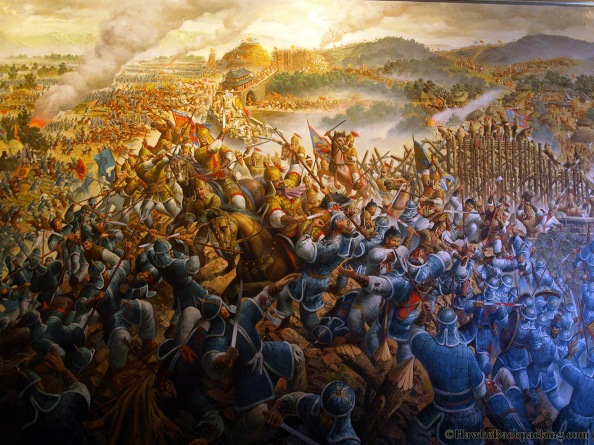 Image source
Image source
And between 1500 BC and 1500 AD the intensity of military competition
in the Old World maps extremely well on the spread of military
technologies based on warhorses. So we built a model around this factor,
and it did an incredibly good job of predicting when and where large
empires arose in Eurasia and Africa.
Here’s a press release that explains our model, written by Catherine Crawley of the
National Institute for Mathematical and Biological Synthesis.
Math explains history: Simulation accurately captures the evolution of ancient complex societies
The question of how human societies evolve from small groups to the
huge, anonymous and complex societies of today has been answered
mathematically, accurately matching the historical record on the
emergence of complex states in the ancient world.
Intense warfare is the evolutionary driver of large complex
societies, according to new research from a trans-disciplinary team at
the University of Connecticut, University of Exeter, and the National
Institute for Mathematical and Biological Synthesis (NIMBioS) that
appears this week as an open-access article in the journal
Proceedings of the National Academy of Sciences.
The study’s cultural evolutionary model predicts where and when the largest-scale complex societies arose in human history.
Simulated within a realistic landscape of the Afro-Eurasian landmass
during 1,500 BC to 1,500 AD, the mathematical model was tested against
the historical record. During the time period, horse-related military
innovations, such as chariots and cavalry, dominated warfare within
Afro-Eurasia. Geography also mattered, as nomads living in the Eurasian
Steppe influenced nearby agrarian societies, thereby spreading intense
forms of offensive warfare out from the steppe belt. On the other hand,
rugged terrain inhibited offensive warfare.
The study focuses on the interaction of ecology and geography as well
as the spread of military innovations and predicts that selection for
ultra-social institutions that allow for cooperation in huge groups of
genetically unrelated individuals and prevent large-scale complex states
from splitting apart, is greater where warfare is more intense.
While existing theories on why there is so much variation in the
ability of different human populations to construct viable states are
usually formulated verbally, by contrast, the authors’ work leads to
sharply defined quantitative predictions, which can be tested
empirically.
The model-predicted spread of large-scale societies was very similar
to the observed one; the model was able to explain two-thirds of the
variation in determining the rise of large-scale societies.
“What’s so exciting about this area of research is that instead of
just telling stories or describing what occurred, we can now explain
general historical patterns with quantitative accuracy. Explaining
historical events helps us better understand the present, and ultimately
may help us predict the future,” said the study’s co-author Sergey
Gavrilets, NIMBioS director for scientific activities.
Citation: Turchin P, Currie T, Turner E, Gavrilets S. 2013. War, space, and the evolution of Old World complex societies. PNAS.
Watch the movie by co-author Tom Currie showing model-predicted dynamics and actual historical data side by side.
When 15 years ago I started working within the scientific discipline that eventually became
Cliodynamics,
my initial plan was to concentrate entirely on past societies. Of
course, history doesn’t end in, say, 1800. But there are dangers in
pushing a historical analysis all the way to the present day. First, we
are too close to the societies we live in. It’s hard to imagine, for
example, that the American empire might collapse tomorrow. I am not
saying it will, but I imagine ancient Romans also did not think that the
Roman Empire would collapse around their ears. Yet it did. In any case,
it is hard to be a dispassionate analyst when you are analyzing
something that will have a huge effect on your personal life.
The second danger is politics. Few people really care about why the
Roman Empire collapsed. But any conclusions you reach about our own
society are certain to tick off either conservatives, or liberals (and
sometimes both).
So for many years I went happily refining my ideas, models, and
empirical analyses of pre-industrial societies. But when I started
giving talks about the decline and collapse of historical empires, I
would almost invariably be asked, “so where are we?”
Eventually, I broke down and started a project on the cliodynamics of
the American republic, beginning with its inception around 1780 and to
the present day.

This project took more years than I thought. Partly it was for a good
reason – there are much, much more data on America, even for the
earlier historical periods than I was used to when I worked on
long-term cycles (‘secular cycles’) in pre-industrial England, France, Russia, and Rome.
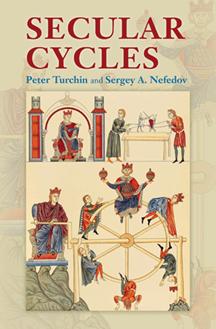
But also I have been mindful of how the results would be interpreted,
so I wanted to make sure that I’d do the best job I can. I am not near
that point, by any means, but the project has reached the stage where I
need feedback to move forward.
Yesterday I posted on my Cliodynamics site
a draft which will eventually be developed into a book describing the results. I welcome comments and suggestions on all aspects of it.
A fair warning: it’s not going to be a popular book. On the contrary,
the text is very dense and there are lots of graphs and tables (and
equations). This draft also needs a lot of work. But even after the book
is finished, it will not be intended for most readers of this blog.
Think of it as the foundations on which I will later base more popular
articles or, perhaps, a book.
 Illustration by Baggelboy. Source
Illustration by Baggelboy. Source
Actually, I am planning to blog about some of the most striking findings in near future, so stay tuned.
But let me talk briefly about one general result right away. Things
are changing in America, and there is a lot of discussion of various
trends. Some commentators talk about the growing inequality and the
hollowing out of the middle class. Others wonder why political
polarization is reaching extreme levels and why the national government
is becoming increasingly dysfunctional. Yet others debate the causes of
waning social capital and cooperation.
Usually all these, and many other trends (why fewer young adults
marry? Why is the distribution of law school graduates’ salaries bimodal
– yes, it is!) are discussed in isolation from each other. Or, perhaps,
some of them are connected, but in a cursory way. This will sound
hubristic, but the structural-demographic model (the theoretical engine
driving the American project) says these trends are not developing
separately from each other. They are, rather, all parts of the dynamical
system that is our society. There are deep, subterranean processes that
explain these trends. They also explain why the trends all date from
roughly the 1970s. Much of the book is devoted to tracing out these deep
interconnections.
But enough of this introduction, and I am looking forward to exploring some of these interconnections in future blogs.
Again, all comments and suggestions are welcome (this is why I am
posting this unfinished product, after all). You can leave comments here
on the SEF or send me an e-mail.
PDF of the book draft here
=====================================================================
Notes on the Margin: I will be off the grid for several days,
because my wife and I are moving to Denmark where I took a visiting
professorship at Aarhus University. So there will be a short break from
blogging while we are making the transition and getting set up there.
Paul Krugman has written
two blogs about Ibn Khaldun
this weekend (and also said some kind words about my research). Readers
of this blog know that I hold Ibn Khaldun in great esteem (see
this blog, for example).
Ibn Khaldun’s greatest contribution is the development of a theory of
collective solidarity/social cooperation, for which he uses the Arabic
term `asabiyyah (which I usually simplify to asabiya). In this he is
very different from such great European thinkers as Machiavelli, Hobbs,
Hume, and Adam Smith, whose great contributions eventually led to the
Rational Choice Theory (and the dead end of
homo economicus in
its most primitive form). Yes, I know that those political philosophers
were much more subtle than they are often given credit for; yet the fact
is that by the second half of the twentieth century a very flawed model
of human nature reigned supreme in economics. Economists and many other
social scientists seemingly took to heart David Hume’s famous
pronouncement:
Political writers established it as a maxim, that, in
contriving any system of government … every man ought to be supposed to
be a knave and to have no other end, in all his actions, than his
private interest.
This is very wrong. It is, in fact, impossible to build a working
society if all its members are selfish rational agents (or “knaves” in
Hume’s wonderful characterization). Selfish agents will not cohere in a
functional society – this I believe can be elevated to the First Law of
Sociology.
Ibn Khaldun knew this and he devoted his book to developing a theory
of the origins of social cooperation/asabiya, and mechanisms responsible
for its loss. I won’t repeat myself here, because I devoted a big chunk
of my popular book
War and Peace and War
to discussing Ibn Khaldun’s theory. In other writings I have modeled
the dynamics of asabiya waxing and waning, loosely based on the ideas of
Ibn Khaldun.
My models were focused on understanding the rise and fall of states
and empires. What is interesting is that a very similar kind of model
can be developed for the rise and fall of business firms. (In
particular,
Rob Axtell,
with whom I have periodically interacted in Santa Fe and elsewhere,
developed such models that are very similar in spirit to my models on
political cycles). In fact, I believe Paul Krugman is completely right
in bringing up Ibn Khaldun when thinking about the decline of Microsoft.
However, I would develop this idea a bit further.
Both states and corporations are, at some fundamental level,
cooperative enterprises. Yes, political elites and corporate managers
are motivated by personal gain, power, status, and prestige. And that
even can be the majority of their motivations. But in addition there has
to be something else, at least some of these elites (whether political
or economic) some of the time must behave in a cooperative prosocial
manner, that is, putting the common interest of their state or
corporation above their private interests. When they stop doing that,
states crumble and corporations go bankrupt.
So here is a simple model that I have in mind for explaining the rise
and fall of mighty corporations, which is heavily influenced by the
ideas of Ibn Khaldun, Rob Axtell, and
Pete Richerson (on institutions) and mine own on the empires. (Also, Rob’s model, which he has published, is well worth checking out).
In the beginning we start with small groups of entrepreneurs randomly
thrown together by chance. The vast majority of these incipient firms
fail. Most of these groups will contain uncooperative selfish knaves.
All such groups will fail with 100% probability; only groups consisting
entirely of cooperators have a chance. However, the majority of such
potentially cooperative groups will still fail because they will be
unable to hit upon the right combination of social norms and
institutions to enable them to cooperate effectively. As an example,
people coming from different ethnic backgrounds often find it difficult
to concert a cooperative action, simply because different cultures
evolved different ways of cooperating, and these may not work well when
thrown together.
In the next step, the majority of even those groups that consist of
cooperators and have acquired effective cooperative institutions will
fail – because they don’t have the right product, or perhaps because
they are simply unlucky. But at least they have a chance, whereas groups
with knaves and lacking the right institutions have no chance at all.
This is a typical cultural evolution scenario. At this stage we have a
lot of variation, with all kinds of incipient firms churned out, and a
selection mechanism that weeds the ones that don’t cut the mustard. This
is completely analogous to the Ibn Khaldun situation of the stateless
‘desert’ where groups that can’t cooperate together in defense (and
predation on other groups!) are rapidly eliminated.
Only those Bedouin groups that wield a lot of asabiya survive and
thrive in the competitive desert. Analogously, only those start-ups that
have a lot of – well, asabiya – survive and thrive in the competitive
markets.
So that’s how high asabiya firms are generated. What happens next?
Next they need to expand without losing asabiya. That means that they
need to be very picky about accepting new members (keep those knaves
out) and have another set of institutions that would allow them to
assimilate newbies to the firm’s social norms of cooperation. If they
surmount this challenge, they will expand and become a huge corporation.
But eventually the rot sets in. More and more knaves weasel their way
in. The institutions that sustained cooperation begin to be undermined
by the selfish behavior of freeriders. Moralistic cooperators, in
response, withdraw their cooperation, because they don’t want to be
taken advantage of. Prosocial founders and early joiners leave the
company and join more cooperative ones, or start new businesses.
Eventually knaves reign and the company is really moribund. However,
it’s big and has a lot of inertia and so it survives – for a while.
Then, however, a particularly greedy set of executives, or a market
downturn, exposes its inherent weakness and the corporation goes under.
You can substitute ‘executives’ with the ‘elites’ and ‘corporation’ with
‘empire’ and you have the gist of my theory of why empires collapse
(however, the time scale on which firms rise and fall is much faster
than that for empires).
And that’s how I see the fall and decline of imperial corporations,
when looked though the lens of Ibn Khaldun’s theory. I won’t name names,
but I am sure we all can think of a number of examples of such moribund
corporations.
In
the previous blog,
I asked why some nations are wealthy, stable, and happy, and others are
not. Many theories have tried to provide an answer to this question.
How do we decide which of the competing theories is true? So far,
economists have not done a compelling job addressing this issue.
Let’s take
Why Nations Fail, one of the best recent books by
economists (or, rather, by an economist Daron Acemoglu and a political
scientist James Robinson) that tackles this question. In his
review in Cliodynamics
Tom Currie notes that there are “two problems with A&R’s analysis
as it currently stands: 1) The descriptive, case study approach adopted
here makes the systematic appraisal of alternative hypotheses difficult,
2) The focus on historical contingency of the development of certain
types of institutions overlooks or down-plays more general patterns
about where and when these institutions have tended to develop.”
I think this criticism is fair. However, it is equally true that we
simply lack appropriate data to test rival theories about the deep roots
of economic development. Consider
another article in the current issue of Cliodynamics, “Was Wealth Really Determined in 8000 BCE, 1000 BCE, 0 CE, or Even 1500 CE?” by William Thompson and Kentaro Sakuwa.
As these authors point out, previous empirical analyses have been
plagued by a variety of problems. One is the use of modern states as
geographical units, even though they may have little relation to
historically appropriate units of analysis. Think of the USSR, for
example – a very inconvenient unit of analysis for any historical period
before 1700, when the Russian Empire emerged as a Great Power.
Another problem is how to deal with time. Some authors look at what
was the situation 10,000 years ago, at the dawn of agriculture. From
there they jump to 1500 BC (the Bronze Age), then to 1 AD (a pretty
arbitrary date), to 1500 AD (the ‘dawn of modernity’), and finally to
the present. Other analyses use different time jumps.
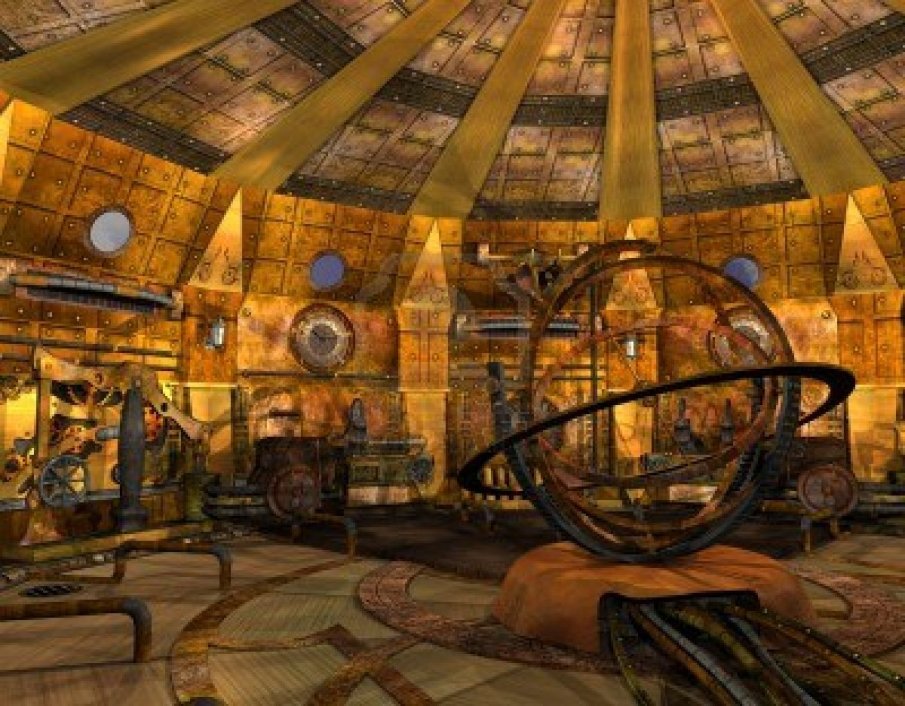 Source
Source
It’s like we have a faulty time machine. Ideally we’d like to jump
back in time to the beginning of things, and then trace how they
developed. So, for example, we would jump to the Fertile Crescent 10,000
years ago, and then travel forward in one century leaps, recording how
everything changes. It would be like Sid Meyer’s game of Civilization,
except for real. “Oh, they invented Monotheism”. “Aha, now they have
Bureaucracy.”
Instead of this, eminently sensible approach, we have to endure jumps
of random duration that land us in periods that may not be of critical
importance to the understanding of questions we want to answer. And we
pass over a lot of history between the jumps (from 8,000 BC to 1500 BC?
Weren’t there a lot of interesting developments in between that we’d
like to see?).
OK, enough of this analogy. We don’t have a time machine, so much the worse.
Except that we do, an imperfect and, at times, an exasperating
version, but it does allow us to peek back in the past. Thousands of
historians and archaeologists collectively can tell us a lot about the
past – not everything, but if we could somehow put all their knowledge
together, it would provide a very rich historical tapestry, which, I am
sure, would allow us to reject a lot of theories – and build better, new
and improved ones.
This is what’s most galling – the data that we need to test theories
are there. Some of it is scattered over a multitude of published and
unpublished articles. But most simply resides in the brains of
historians or archaeologists specializing on particular regions and
epochs. The only way to make these data useful (for a systematic testing
of theories, that is) is to translate/transcribe them from human brains
onto electronic, computer-readable media.
 Can Seshat, the Egyptian goddess of knowledge and scribing, help
us to transcribe what is known about human history onto electronic
media? Source
Can Seshat, the Egyptian goddess of knowledge and scribing, help
us to transcribe what is known about human history onto electronic
media? Source
As I wrote in previous blogs (e.g., here), one of my current (and probably the most important) projects is
Seshat: Global History Databank.
So today I cannot answer the questions with which I started this blog.
But give us a few years. Once we can trace how agricultural innovations
and new ways of organizing polity, society, and economy arose and
spread, we will be able to have a much better idea why some nations are
rich, and others are poor.
I am not one to join in this Economics-bashing. Yes, there are lots
of problems – much sterile mathematical theory in Economics, an
over-reliance on equilibrium models, and a tendency to treat people as
‘homo economicuses’ (yes, I know it should be something like
homines oeconomici,
but we are not purists here). On the other hand, Economics was the
first social science to become thoroughly mathematized. Also, in the
last decade or two Economics has been reinventing itself. One only needs
to point to Behavioral Economics and to Evolutionary Economics (in
fact, I am going to an Evolutionary Economics conference in September –
stay tuned for a report to appear on this blog).
These developments are mostly taking place within the academic
science, however, and have not yet impressed themselves on popular
consciousness. For example,
Freakonomics, probably the most popular recent book about Economics, stays resolutely within the classical paradigm.
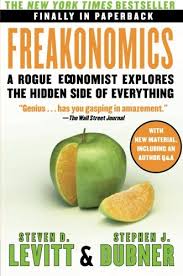
A standard approach that treats people as
homines oeconomici perhaps can be useful in asking some questions, but the realm of application is a very limited one.
For example,
Freakonomics promises to answer such questions as:
Which is more dangerous, a gun or a swimming pool? What
do schoolteachers and sumo wrestlers have in common? Why do drug dealers
still live with their moms? (from the blurb on the Amazon)
My response is, who cares? Is this really the “hidden side of
everything”? Why don’t you explain to me why some nations are rich and
some are poor? And, even more pressingly, why some rich nations suddenly
become poorer, and vice versa? How can we get out of the economic
doldrums we have been stuck in for the last few years? For that matter,
how can Japan, or southern Europe (which are in much worse shape) get
out from the hole they are currently in?
Freakonomics does not even attempt to answer such questions – because if you are stuck with the traditional approach, you can’t.
Understanding economic growth is, of course, the Holy Grail of
Economics. Except you can’t do it with a purely economic approach – this
has become quite clear in the last few years. You need other social
sciences and, perhaps, even biological ones (especially if some current
claims that there is a genetic component to economic development are
true, something I am rather skeptical of). I would argue that you need
something like Cliodynamics to answer this question. In particular,
because evidence accumulates that modern economic development has deep
historical roots.
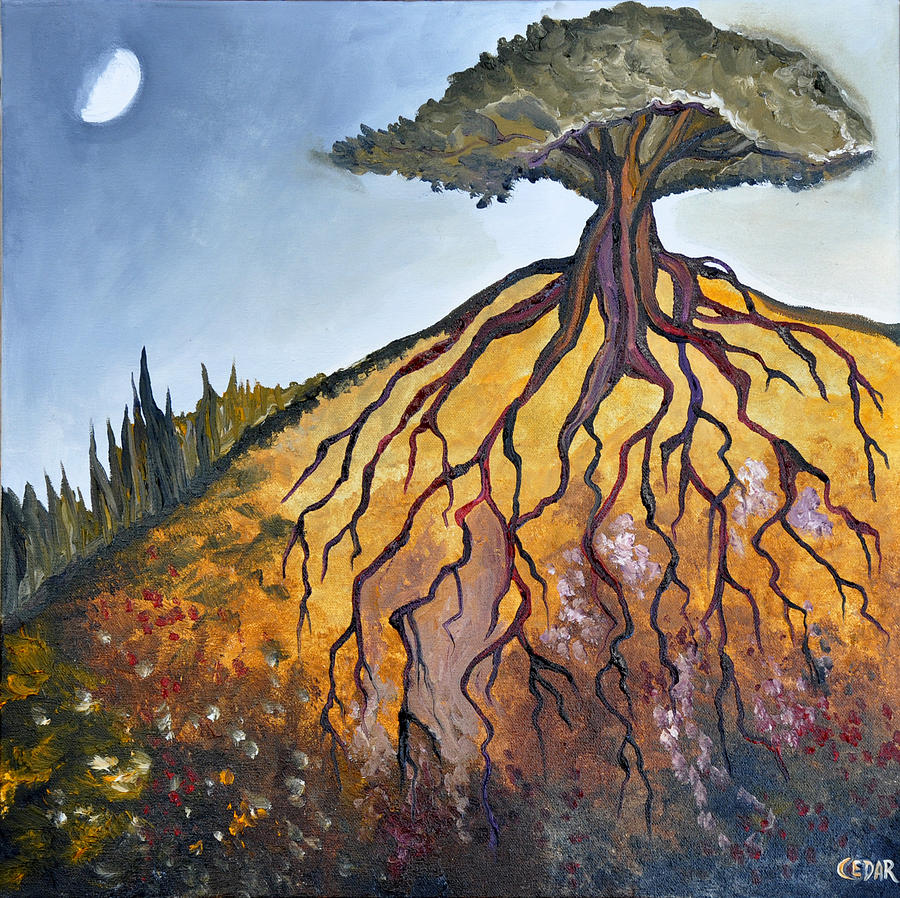 Source
Source
There is no question that today there is a staggering degree of
variation in economic performance and effectiveness of governance among
nations. Understanding the causes of these disparities is one of the
greatest intellectual puzzles in the social sciences, and one of the
most pressing problems for economic policy.
We have pretty good idea of who are the winners and who are the losers (and I am not just talking about GDP per capita;
human quality of life
is a much more multidimensional quantity than that). But why are some
nations wealthy, happy, and politically stable, while others are poor,
miserable, and in the state of constant civil war? That is very much in
dispute.
In answering this question, at first economists emphasized capital
accumulation and technological progress; then, personal incentives and
specific policies. In more recent years, the attention has moved to the
institutional framework. Daron Acemoglu and James Robinson, for example,
have been arguing that economic growth can only be made possible by
developing inclusive institutions enabling broad sections of the
population to participate in economic and political activities (see
a review of their book, Why Nations Fail, by Tom Currie in the last issue of Cliodynamics).
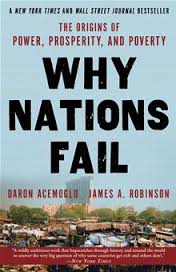
Others think that there is a direct effect of geography on economic
growth, focusing on such mechanisms as disease burdens. For example,
Jeffrey Sachs and co-authors have pointed to a striking correlation
between malaria and poverty. Another ‘geographic determinist’ (unlike
most, I don’t think that this is a pejorative term),
Jared Diamond, thinks that biogeographic conditions affect current wealth indirectly. The more time has elapsed since the agricultural revolution in a region, the wealthier the region is likely to be.
On the other hand, economists, such as Enrico Spolaore and Romain
Wacziarg, make a strong case that it is not the geographic region that
is of key importance. Rather, it is the ancestral composition of current
populations. An even more extreme idea is the one by Oded Galor and
Quamrul Ashraf, who recently concluded that countries with intermediate
levels of genetic diversity, such as the United States, have the most
productive economies (see this
News Feature in Nature).
So we have lots of explanations of why some nations are rich and
others poor. They invoke a variety of factors: economic, sociological,
geographical, and even genetic. How do we decide which of the competing
theories is true?

Cliodynamics: The Journal of Theoretical and Mathematical History
‘Cliodynamics’ is a transdisciplinary area of research integrating historical
macrosociology, economic history/cliometrics, mathematical modeling of long-term social
processes, and the construction and analysis of historical databases.
Cliodynamics:
The Journal of Theoretical and Mathematical History is an international
peer-reviewed web-based/free-access journal that will publish original articles
advancing the state of theoretical knowledge in this discipline. ‘Theory’ in the
broadest sense includes
general principles that explain the functioning and
dynamics of historical societies and
models, usually formulated as mathematical
equations or computer algorithms. It also has
empirical content that deals with
discovering general empirical patterns, determining empirical adequacy of key
assumptions made by models, and testing theoretical predictions with the data from
actual historical societies. A mature, or ‘developed theory,’ thus, integrates models
with data; the main goal of
Cliodynamics is to facilitate progress towards such
theory in history.
Submission of both empirical and modeling articles is encouraged. We are particularly
interested in articles that combine model development with empirical tests. However, the
journal will also publish empirical papers that make explicit connections to general
theories and modeling papers that are motivated by empirically observed patterns.
Additionally, we publish databases (especially those focusing on time-series data) that
can serve as testbeds for theories, methodological articles relevant to the issues
described above, and critical commentaries on articles published in the journal and on
general issues in theoretical and quantitative history.
Most accepted manuscripts are published as
articles (12,000 words or less). In
addition, we will consider shorter
reports (a maximum of 3,000 words and four
figures or tables). Occasionally we publish
forum articles (12,000 words or
less) reporting on a substantial advance in cliodynamics, which will be accompanied by
several shorter commentaries/critiques (1,000 words each). All word limits are strictly
enforced; however, an article can be linked to on-line Supporting Information, which is
not limited in size. We solicit proposals for book reviews and meeting reviews, and
proposals for special journal issues devoted to a particular topic.
Note on printing articles: Journal pages have been formatted in such a way that two of
them fit precisely on a regular (either American, or European) sheet of paper. Thus, to
print a hard copy (1) download the PDF, (2) drop the cover page, supplied automatically
by eScholarship, and (3) instruct your printer to print the rest as two pages side by
side.
Current Issue, Volume 4, Issue 1, 2013
Editor's Column
An Issue Devoted to Dialogue
Turchin, Peter
Articles
Was Wealth Really Determined in 8000 BCE, 1000 BCE, 0 CE, or Even 1500 CE?
Thompson, William R; Sakuwa, Kentaro
Forum
Indo-Europeans Were the Most Historically Significant Nomads of the Steppes
Duchesne, Ricardo
The Actual Achievements of Early Indo-Europeans, in Accurate Historical Context
Beckwith, Christopher I
The Origins of Western Superiority: A comment on Modes of Meta-History and Duchesne’s Indo-Europeans Article
Goldstone, Jack A
The West and the Rest: The Science of the Great Divergence
Turchin, Peter
The Uniqueness of the West Reinforced: A Reply to Beckwith, Goldstone, and Turchin
Duchesne, Ricardo
Social Evolution Forum
Human Cultures are Primarily Adaptive at the Group Level (with comment)
Wilson, David Sloan
Human Cooperation is a Complex Problem with Many Possible Solutions: Perhaps All of Them Are True!
Richerson, Peter J
Book Reviews
Inequality and Institutions: A Review Essay on Why Nations Fail by Daron Acemoglu and James A. Robinson
Currie, Thomas E
Correlates of Objective Historiography: A Review Essay on Hierarchy, History, and Human Nature by Donald E. Brown
Scupin, Raymond
Reflections on Violence in the Spanish Borderlands: A Review Essay on Chiricahua and Janos by Lance R. Blyth
Hall, Thomas D
Volume 3, Issue 2, 2012
Editor's Column
Introducing a New Section—Databases
Turchin, Peter
Articles
Evolutionary Decomposition and the Mechanisms of Cultural Change
Beheim, Bret A; Baldini, Ryan
Endogenous Population and Resource Cycles in Historical Hunter-Gatherer Economies
Szulga, Radek Szymon
Databases
A Historical Database of Sociocultural Evolution
Turchin, Peter; Whitehouse, Harvey; Francois, Pieter; Slingerland, Edward; Collard, Mark
Seeing the Forest of Secular Cycles
Sirag, Jr., David J
Book Reviews
Multicultural vs. Post-Multicultural World History: A Review Essay
Hewson, Martin
Comparative Archaeology: The Camel’s Nose?
Kohler, Timothy A.
State Formation in Hawai’i
Smith, Michael E.
Social Evolution Forum
Networking Past and Present
Dunbar, R.I.M.; Baumard, Nicolas; Hamilton, Marcus J.; Hooper, Paul; Finkel, Daniel N.; Gintis, Herbert
Volume 3, Issue 1, 2012
Editor's Column
The Special Issue on Failed States and Nation-Building
Turchin, Peter; Coon, Carleton; Wilson, David Sloan
Articles
Processes Too Complicated to Explain
Coon, Carleton
The Evolution of War
Morris, Ian
Tribal Social Instincts and the Cultural Evolution of Institutions to Solve Collective Action Problems
Richerson, Peter; Henrich, Joe
Prosociality, Federalism, and Cultural Evolution
Bednar, Jenna
Centralization/Decentralization in the Dynamics of Afghan History
Barfield, Thomas
The Taliban's Adaptation 2002-11: a Case of Evolution?
Giustozzi, Antonio
State and Socio-Political Crises in the Process of Modernization
Grinin, Leonid
Failed States and Nation-Building: A Cultural Evolutionary Perspective
Turchin, Peter
Social Evolution Forum
The Evolution of Human Cooperation
Gintis, Herbert; Doebeli, Michael; Flack, Jessica
The Peacock’s Tale: Lessons from Evolution for Effective Signaling in International Politics
Blumstein, Daniel T.; Atran, Scott; Field, Scott; Hochberg, Michael; Johnson, Dominic; Sagarin, Raphael et al.
Volume 2, Issue 2, 2011
Editor's Column
Introducing the Social Evolution Forum
Turchin, Peter; Hochberg, Michael E
Articles
The Roman Dominate from the Perspective of Demographic-Structural Theory
Baker, David C
War Games: Simulating Collins’ Theory of Battle Victory
Fletcher, Jesse B; Apkarian, Jacob; Roberts, Anthony; Lawrence, Kirk; Chase-Dunn, Christopher; Hanneman, Robert A
A Trap At The Escape From The Trap? Demographic-Structural Factors of Political Instability in Modern Africa and West Asia
Korotayev, Andrey; Zinkina, Julia; Kobzeva, Svetlana; Bozhevolnov, Justislav; Khaltourina, Daria; Malkov, Artemy et al.
Book Reviews
How Big Should Historians Think? A Review Essay on Why the West Rules—For Now by Ian Morris
Pomerantz, Kenneth
Expansion Cycles in Competitive Systems: A Review of Expansions by Axel Kristinsson
Christian, David
Middle Range Theory: A Review of The Origins of Political Order by Francis Fukuyama
Manning, Joseph G
Science or Ideology? A Review of The Archaeology of Politics and Power by Charles Maisels
Blanton, Richard E
Social Evolution Forum
Institutional Rigidity and Evolutionary Theory: Trapped on a Local Maximum
Lustick, Ian S; Nettle, Daniel; Wilson, David Sloan; Kokko, Hanna; Thayer, Bradley A
Volume 2, Issue 1, 2011
An Inquiry into History, Big History, and Metahistory
Krakauer, David; Gaddis, John L; Pomeranz, Kenneth L
Articles
A Single Historical Continuum
Christian, David
A Paleontological Look at History
Erwin, Douglas H
War, Peace, and Everything: Thoughts on Tolstoy
Gaddis, John L
Regularities in Human Affairs
Gell-Mann, Murray
Meta-History’s Dangerous Dream
Harpham, Geoffrey G
The Star Gazer and the Flesh Eater: Elements of a Theory of Metahistory
Krakauer, David C
Homogeneity, Heterogeneity, Pigs and Pandas in Human History
McNeill, John R
Labeling and Analyzing Historical Phenomena: Some Preliminary Challenges
Pomeranz, Kenneth L
Complexity in Big History
Spier, Fred
Toward Cliodynamics – an Analytical, Predictive Science of History
Turchin, Peter
A Historical Conspiracy: Competition, Opportunity, and the Emergence of Direction in History
Vermeij, Geerat J
Can there be a Quantitative Theory for the History of Life and Society?
West, Geoffrey B
Volume 1, Issue 1, 2010
Launching the Journal
Turchin, Peter
Articles
A Dynamic Theory of Battle Victory and Defeat
Collins, Randall
Synthezing
Secular, Demographic-Structural, Climate and Leadership Long Cycles:
Moving Toward Explaining Domestic and World Politics in the Last
Millennium
Thompson, William R
Cycling in the Complexity of Early Societies
Gavrilets, Sergey; Anderson, David G; Turchin, Peter
Reports
Why Has the Number of International Non-Governmental Organizations Exploded since 1960?
Turner, Edward A L
Book Reviews
New Patterns in Global History: A Review Essay on Strange Parallels by Victor Lieberman
Goldstone, Jack A
The Silk Road: A Review Essay on Empires of the Silk Road by Christopher I. Beckwith
Hall, Thomas D
Tests in Time: A Review of Natural Experiments of History, edited by Jared Diamond and James A. Robinson
Currie, Thomas E
Accumulation of Knowledge in Theoretical History: A Review Essay on Historical Macrosociology by Nikolai S. Rozov
Tsirel, Sergey V
Regularities in Human Actions: A Review of Bursts by Albert-László Barabási
Zeng, An; Roehner, Bertrand
![[6x]](http://acloserlisten.files.wordpress.com/2013/09/6x.jpg?w=492)


































